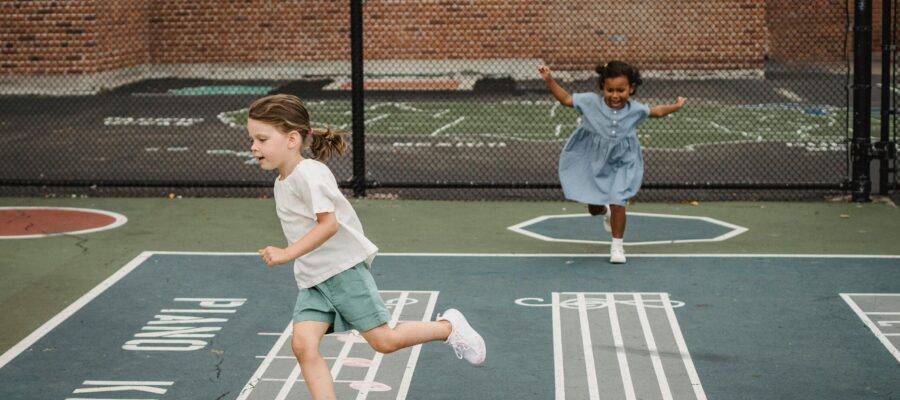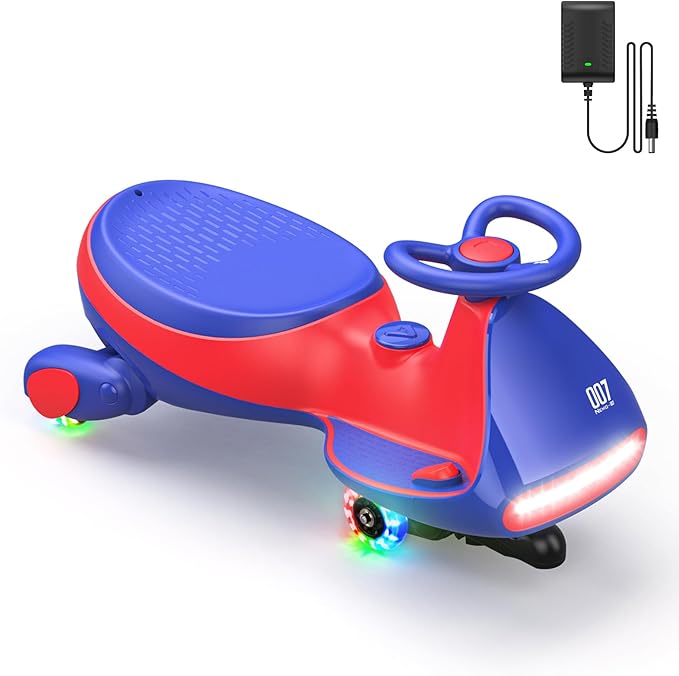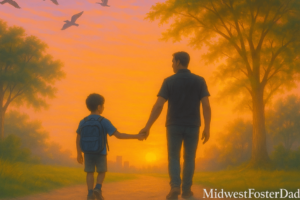Summer is Coming!
Did you know that outdoor activities for kids can dramatically improve their physical, emotional, and mental well-being? Time outside doesn’t just burn energy—it builds social skills, enhances focus, and helps children regulate big feelings.
As a foster parent for over three years—and with six years of experience in Children’s Services—I’ve tested my share of outdoor activities and toys. Some have been total game-changers. Others? Not so much.
I still remember one summer day when my foster son, who normally struggles with transitions and meltdowns, spent over an hour immersed in a simple backyard obstacle course. For the rest of the day, he was calmer, more connected, and even initiated play with his siblings—something he rarely does.
In this post, I’m sharing 30 of the best outdoor activities for kids—specifically chosen with trauma-informed care in mind. These are activities that support emotional regulation, encourage creativity, and build confidence. I’ve seen the results firsthand: fewer meltdowns, more imaginative play, and stronger sibling bonds (plus a little more peace of mind for me).
Whether your child is navigating ADHD, autism, or the effects of early trauma, this list is packed with outdoor play ideas that meet them where they are. Many of these activities also include trusted tools and toys we’ve used ourselves—check them out here to make outdoor time both fun and meaningful.

Sometimes the best therapy isn’t found in an office—it’s outside, in the dirt, under a tree, or on a swing.
Kids who’ve experienced trauma or who have sensory issues often feel overwhelmed in loud, crowded, or overly structured environments. They’re not just being “difficult”—their brains are wired to react to the world differently. That’s where outdoor play becomes more than just a fun activity—it becomes a healing tool.
Research shows that adverse childhood experiences can have a lasting impact on brain development, emotional regulation, and behaviorResearch Plan: Benefits…. Many kids in foster care or those navigating early childhood trauma display what is known as sensory seeking behavior. This might look like constant movement, climbing, spinning, or crashing into things. They’re trying to meet their body’s need for sensory input.
So what is sensory seeking behavior? A sensory seeker is a child whose nervous system craves more input than others. They may not feel typical levels of stimulation the same way and often seek out big movement or tactile experiences to self-regulate. That’s where outdoor activities for kids really shine.
Outdoor environments are rich in natural sensory input—wind in the hair, grass underfoot, the scent of fresh dirt after rain. Unlike indoor spaces that can feel sterile or overstimulating, outdoor play naturally supports both sensory seekers and sensory avoiders. Climbing trees, balancing on logs, and digging in sandboxes are all unstructured activities that encourage regulation and calmResearch Plan: Benefits….
Even tech activities outdoor for kids—like using a waterproof tablet for nature scavenger hunts or snapping photos of bugs—can offer the perfect mix of stimulation and screen time. It’s about creating balance, not banning technology entirely.
When it comes to supporting kids with trauma or sensory needs, having the right tools matters. Some of the best outdoor toys for kids with these challenges include sensory swings, climbing domes, water tables, and even good old-fashioned hula hoops. These outdoor toys for kids aren’t just for entertainment—they offer controlled sensory input that helps children self-soothe, focus, and develop motor skills.
The bottom line? Outdoor play helps kids connect with their bodies and the world around them in a way that feels safe and joyful. And for a child healing from trauma or navigating sensory issues in kids, that can make all the difference. Without further ado let’s check out these summer activities for kids!
30 Outdoor Activities for Kids
Calming Outdoor Activities for Overstimulated Kids
Not every child needs high-energy play. For kids who become overstimulated easily, outdoor activities that are slow, quiet, and sensory-friendly can offer the regulation they need to stay grounded. These calming outdoor ideas help children slow their heart rate, feel more connected to their bodies, and manage big feelings in a safe space.
Turn your yard or local park into a sensory-rich adventure. I love this scavenger hunt kit. It has easy to read cards with visual cues. You can also print or draw a list of things to find. This activity boosts focus while gently encouraging mindfulness.
The rhythm of digging, watering, and planting is incredibly soothing. Plus, kids take pride in watching something grow—especially something they helped nurture. I’ve found this to be a good way to get my kids to try different veggies. For some reason when they grow it, it doesn’t “taste nasty” like the stuff at the store.
Mandalas are circular patterns that promote calm and focus. Have your child draw their own with chalk, or trace a template. The act of coloring in repetitive shapes can be deeply grounding.
Create a DIY barefoot trail using items like soft grass, smooth stones, or foam mats. Walking slowly over different textures helps kids connect with their senses in a peaceful, structured way.
I know what you’re thinking. Bird watching. Really?
Guess what? It’s not just for old people. Bird watching can be a relaxing activity that also helps to keep kids engaged in spotting new birds and eager to explore their environment.
These kids’ binoculars a perfect for exploring outside.
Sit outdoors and just… listen. Wind chimes, rustling leaves, distant birds. Ask your child what sounds they hear, and where they might be coming from. This builds auditory awareness while teaching stillness.
I am a huge fan of this kit. Kids love to build stuff and have their work proudly displayed. With Mother’s Day coming up, this could be a special gift for mom or grandma!
High-Energy Activities for Kids with ADHD or Emotional Dysregulation
Some kids need to move before they can regulate. For children with ADHD, trauma responses, or high sensory needs, outdoor activities that involve running, jumping, and coordination help burn off energy and build body awareness. These high-energy ideas give them the freedom to move with purpose—without the chaos.
Jump, jump, and more jumping. This Little Tikes Splash n Spray Inflatable Bouncer is perfect for warm summer days.
Kids will enjoy jumping and splashing until they (hopefully) burn off all their energy!
The great part about these airplane launchers is that they fly… far. The farther they fly, the farther your kids have to run.
Burning energy is the name of the game.
For kids who crave climbing and intense movement, a ninja slackline is a great investment. It builds core strength, balance, and resilience as they try, fall, and try again. Set it up between two trees and allow free play or create timed challenges. Kids build confidence as they master each obstacle
Nothing screams summer like a water balloon fight. The downside of traditional water balloons is you run out quickly and the fun is over.
I love these reusable ones. Their easy to fill by just dunking in water. I like to fill up a big bucket and let the kids go crazy.
Bring back the joy of school field days with old-school races. Sack races work major muscles, while spoon-and-egg games add a layer of balance and impulse control. These silly contests encourage laughter and connection—especially helpful when transitioning from tough behaviors or emotional dysregulation earlier in the day.
Turn your sidewalk or driveway into a track using cones or chalk. Have kids drive a wiggle car or trike through loops, figure eights, and finish lines. This activity is fantastic for vestibular input and practicing start-stop body control.
I love playing frisbee golf at my local park. These aren’t quite the same but it’s perfect for the backyard.
Have your kids start right in front of it and toss it in then gradually keep moving further back. Whoever can make it from the furthest away, wins!
Jump ropes aren’t just for cardio—they’re fantastic for rhythm, timing, and self-regulation. Encourage kids to try counting jumps, skipping with a song, or seeing how long they can keep going. It’s a solo or group activity that lets them feel capable and in control of their bodies
Place hula hoops in the yard and play music. While the music plays, kids can dance, hop, or spin—but when it stops, they must quickly jump into a hoop and freeze. This playful twist on musical chairs teaches impulse control and is especially fun for siblings or friend groups.
Sensory-Rich Activities for Regulation and Exploration
These activities are perfect for sensory-seeking kids who crave input through touch, sound, sight, or movement. Rather than suppressing their need to stim or move, these ideas provide safe, structured ways to engage the senses and support self-regulation. They also build curiosity, independence, and confidence.
Set up a water table, kiddie pool, or even just a few tubs with cups and sponges. Water is one of the most calming sensory tools there is. Pouring, scooping, splashing, and stirring all provide satisfying tactile feedback.
Designate a small corner of your yard or sandbox as a “kitchen” zone. Add old pans, utensils, bowls, and let kids mix dirt, water, leaves, and imagination. This kind of unstructured sensory play is great for creativity and emotional release, especially for kids who’ve experienced early adversity or control-based trauma.
Diggers, trucks, and scoops turn a sandbox into a world of its own. Bury “treasures” to find or build roads and ramps together. This type of tactile play is grounding and builds problem-solving skills. The repetitive digging motions also promote calm and focus in sensory-seeking children.
19. Frozen Toy Excavation

Freeze small plastic animals or toys in a muffin tin of water and pop them out into a bin. Give your child tools to chip away at the ice, melt it with warm water, or use a toy hammer. The cold temperature provides great sensory contrast, and the activity promotes patience and curiosity.
20. Sound Scavenger Hunt

Instead of looking for objects, encourage your child to listen for them: birds chirping, leaves crunching, cars passing, a dog barking. You can create a list ahead of time or make it spontaneous. This builds auditory awareness and is great for children who struggle to process or filter sound.
Set up a bubble machine, turn on some fun music, and let your child dance through the floating bubbles. The popping sensations, movement, and sound combo is perfect for sensory stimulation.
22. Paint with Water on Sidewalk

No mess, just mindfulness. Give your child a paintbrush and a bucket of water and let them “paint” shapes or drawings on the concrete. It dries quickly, which encourages them to keep creating. This is a calming visual and tactile activity that can be done solo or with siblings.
Use herbs, flowers, pinecones, and leaves to engage the olfactory sense. Encourage your child to smell each item and describe it. Does it remind them of something? Does it make them feel calm, excited, or curious? This helps develop sensory vocabulary and emotional insight.
Group Outdoor Activities That Build Social Skills
Outdoor play is an ideal opportunity to support social-emotional learning. These group activities encourage cooperation, turn-taking, teamwork, and communication—all critical for children with trauma backgrounds, ADHD, or autism. Plus, they’re just plain fun and a great way to strengthen bonds among siblings or friends.
Bring out the classic preschool parachute or a large bedsheet. Kids can shake it to pop balls in the air, lift it to run under, or take turns leading the group in different motions. These games support coordination, trust-building, and group regulation through shared rhythm and anticipation.
25. Cooperative Relay Races

Instead of competitive races, try partner-based challenges: carry a ball between your backs, walk while holding hands and balancing an object, or run a three-legged race. These relays teach teamwork, patience, and the value of helping each other succeed—key for kids learning to rebuild trust.
26. Nature-Themed Simon Says

Give this classic game a nature twist. “Simon says flap like a bird,” or “Simon says tiptoe like a deer.” Add regulation-friendly movements like deep breathing or stretching. The game encourages listening, impulse control, and following multi-step instructions—all wrapped in playful imitation.
Laser tag is just great way to add excitement to group play. It also encourages teamwork and strategy.
Try it out at night in the backyard!
28. Outdoor Charades

Act out animals, vehicles, or characters using body language and exaggerated motion. It’s great for building nonverbal communication and emotional expression. For kids who are shy or slow to warm up, playing with you or a sibling first can help build confidence.
This will take everybody back to class field day. Your kids will have the whole neighborhood competing to see who can come out on top! Odds are, the parents may join in too.
Let your child create their own outdoor sanctuary using sticks, cardboard boxes, blankets, or patio furniture. The act of designing a personal space gives kids a sense of control, safety, and imagination. It can be as simple as a “tent” made from a bedsheet and lawn chairs or a more complex hideout crafted from nature itself. Forts often become stages for storytelling, symbolic play, or quiet retreat—a powerful therapeutic outlet disguised as fun.
Trauma-Informed Tips for Safe, Supportive Outdoor Play
When kids have experienced trauma, the way we do play matters just as much as the activity itself. Trauma-informed outdoor play means creating an environment that feels safe, predictable, and empowering. Here are some simple but powerful strategies to help you support your child while they explore and have fun outside.
- Use visual schedules or timers for transitions
- Kids with a history of trauma often struggle with transitions, especially unexpected transitions. Before heading outside, try using a picture schedule or visual timer to show what’s happening now and what’s coming next. This reduces anxiety and helps them feel more in control of their day.
- Watch for early signs of dysregulation
- Meltdowns often have warning signs: repetitive speech, withdrawing, hyperactivity, or clumsy movement. Learn your child’s cues and adjust the activity before things spiral. Sometimes a 5-minute break or a quiet space is all it takes to avoid a full-blown shutdown.
- Offer an “exit strategy”
- Always provide a way for your child to step away without feeling like they’ve failed. A shaded bench, a sensory bottle, or a nearby adult with open arms can be enough. Let them know it’s okay to pause and that taking care of themselves is a good thing.
- Normalize breaks, snacks, and hydration
- Kids recovering from trauma may ignore internal cues like hunger or thirst. Build in scheduled breaks for a snack, a drink of water, or just to sit and talk. This not only supports regulation—it helps model self-care.
- Model co-regulation through play
When your child is overwhelmed, jump in with them. Match their energy, mirror their movements, or just sit quietly nearby. Play is a powerful co-regulation tool, especially when kids can feel your calm and steady presence without words.
Supervision & Safety Tips for Families
When you’re parenting a child from foster care or with a trauma history, outdoor safety goes beyond helmets and sunscreen. It’s about understanding emotional needs, state regulations, and creating an environment where kids feel secure enough to explore and take healthy risks.
Know your licensing rules
Every state has specific rules for foster parents when it comes to outdoor supervision-especially around water, parks, or community spaces. Check your guidelines and make sure you’re compliant with all rules. It’s about keeping kids safe and protecting your placement
Establish clear physical boundaries
Before play begins, walk your child through safe zones: “You can go up to the tree line,” or “Stay where I can see you from the porch.” Visual boundaries like cones, flags, or chalk lines help younger kids or those with ADHD stick to the rules without constant redirection.
Teach safety skills in context
Rather than lecturing before you go outside, teach safety in real time: “Oops, that gate leads to the road—let’s close it together,” or “Let’s practice asking an adult before climbing that tree.” Repetition builds memory, and pairing it with action builds confidence.
Create structure in free play
Kids with trauma may feel overwhelmed by too much freedom. Offer a menu of outdoor choices or rotate toys to reduce decision fatigue. Even loose routines—like “first 10 minutes of movement, then water play”—can offer the predictability they crave.
Support safe touch and boundaries
Many kids in foster care are still learning what safe, respectful touch looks like. Outdoor group play is a great time to practice phrases like “Can I tag you?” or “Let’s play without pushing.” Reinforce bodily autonomy with lots of praise for respectful interactions.
Final Thoughts
Outdoor play isn’t just an activity—it’s a form of therapy, connection, and empowerment for kids who need it most. Whether your child is navigating big emotions, sensory processing challenges, or the effects of trauma, the right outdoor experience can provide healing in ways that words and worksheets simply can’t.
During my time both as a caseworker and now a foster parent, I’ve yet to see a kid who did not benefit in some way from outdoor play. Being outside gives you a greater sense of freedom, something kids are vying for more and more every day.
These 30 trauma-informed activities aren’t about being Pinterest-perfect. They’re about showing up, being flexible, and offering your child a chance to feel joy, freedom, and safety in the great outdoors.
Let me know in the comments: Which activity is your kid’s favorite?
If you want to be updated, join my newsletter below. And don’t forget to share and follow on social media!



























